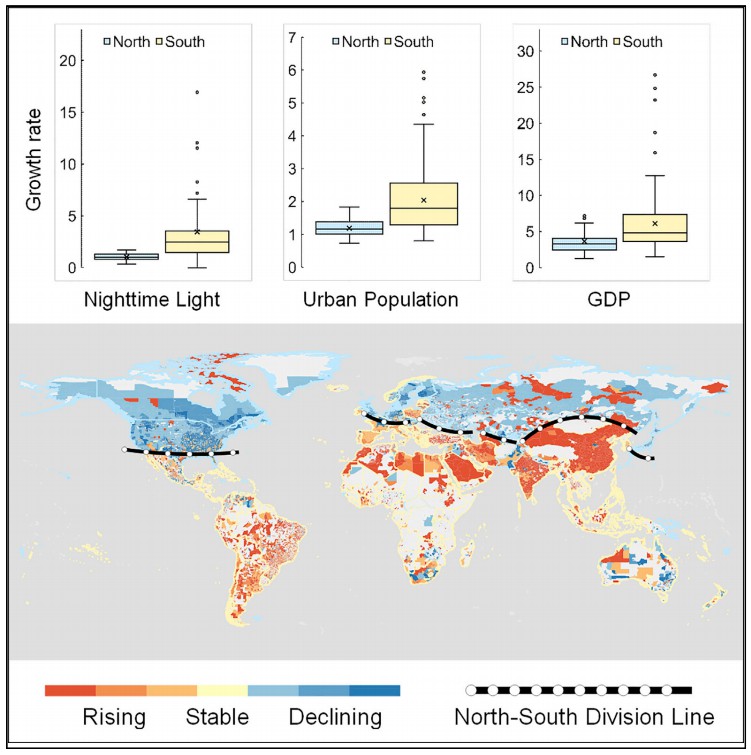SUMMARY
Rapid urbanization has tremendously changed the global landscape with profound impacts on our society. Nighttime light (NTL) data can provide valuable information about human activities and socioeconomic conditions thus has become an effective proxy to measure urban development. By using NTL-derived urban measures from 1992 to 2018, we analyzed the spatiotemporal patterns of global urban development from country to region to city scales, which presented a distinct North-South divergence characterized by the rising and declining patterns. A global North-South division line was identified to partition the globe into the Line-North and the Line-South geographically, which accorded with the socioeconomic difference from the aspects of urban population and economy.
This line may keep a certain degree of stability deriving from the trends of population and economic information but also bears uncertainties in the long term.
Supplementary materials:
https://www.cell.com/iscience/fulltext/S2589-0042(21)00697-0

Q.E.D.









